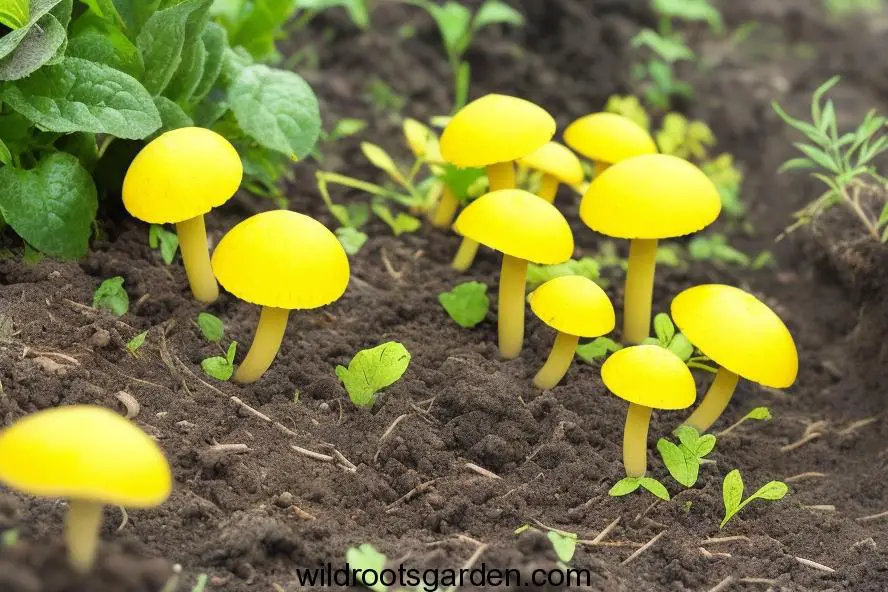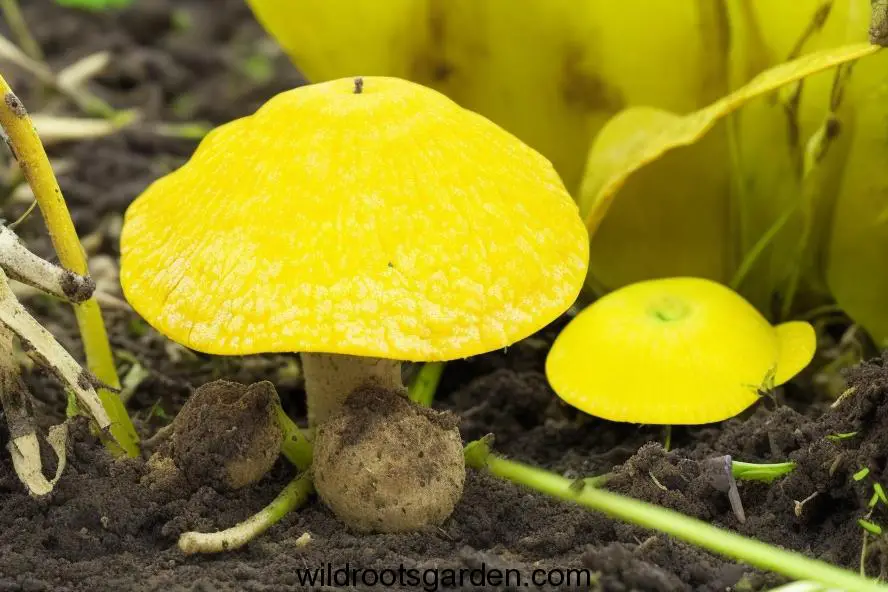Yellowish Mold on Plant Soil. Fuligo septica is a form of fungus that grows on plant soil in a yellowish mould. Due to its look, it is also known as dog vomit slime mold or scrambled egg slime mold. Although it is safe for both people and plants, it can be ugly. The mold that is yellowish thrives in warm, humid, and gloomy environments. It can grow in the soil itself, however, it is frequently found on the top of potting soil. You can either use a fungicide, repot the plant in new soil, or scrape the yellowish mold from the soil’s surface.
More than merely aesthetic items, houseplants infuse interior spaces with life and vitality. Yet, it can be concerning if yellow fungus begins to grow in the soil. Your plants’ whole health may be put at risk in addition to how attractive they seem. We will arm you with the knowledge required in this guide to combat yellow fungus and make sure your houseplants thrive.
Here are some tips to prevent yellowish mold from growing on your plant soil:
- Water your plants deeply and infrequently.
- Allow the soil to dry out between waterings.
- Use a well-draining potting mix.
- Repot your plants every few years.
- Keep your plants in a well-ventilated area.
- Avoid overfeeding your plants.
- Remove any dead or dying leaves from your plants.
2. What Causes Yellow Fungus in Soil?

The main causes of yellow fungus in soil are excessive moisture and insufficient drainage. Fungal spores can flourish in an environment where the soil is continually moist. These spores grow into a yellow fungus that can quickly spread and harm your plants’ roots. Using polluted soil or overwatering the area might also make the problem worse.
3. Identifying Symptoms
It’s crucial to be able to recognize the symptoms of yellow fungus in its early stages to prevent its spread. Look for yellow or pale spots on the leaves, accompanied by a wilting or drooping appearance. You may also notice a musty odor emanating from the soil. As the fungus progresses, the roots might appear discolored or rotting.
4. Impact on Plant Health
Your plants’ general health may suffer as a result of yellow fungus. The plant’s capacity to absorb water and nutrients from the soil is hampered since it directly impacts the root system. As a result, the plant may develop slowly, have weak stems, and be less resistant to pests and diseases.
5. Preventing Yellow Fungus

Prevention is the key to maintaining a fungus-free environment for your houseplants. Here are some effective measures you can take:
- Well-Draining Soil: Use high-quality, well-draining potting soil to ensure excess water doesn’t accumulate.
- Appropriate Watering: Water your plants only when the top inch of the soil feels dry to the touch.
- Adequate Air Circulation: Ensure proper ventilation around your plants to discourage fungal growth.
- Quarantine New Plants: When introducing new plants, isolate them for a few weeks to ensure they are not carrying any fungal infections.
6. Effective Treatment Options
If you’ve already spotted signs of yellow fungus, immediate action is necessary. Here’s what you can do:
- Isolate the Plant: Separate the infected plant from others to prevent the spread of spores.
- Adjust Watering: Allow the soil to dry out between waterings to create an unfavorable environment for the fungus.
- Prune Affected Areas: Trim affected leaves and roots to stop the fungus from spreading further.
7. Nutrition and Soil Health
Healthy plants are more resilient against diseases and infections. Providing the right nutrients can make a significant difference in preventing yellow fungus. Consider using a balanced liquid fertilizer to promote strong growth and vitality.
***In conclusion, keeping your indoor plants in a healthy atmosphere is crucial to avoid the growth of yellow fungus in the soil. You can make sure your indoor garden stays healthy and growing by being aware of the causes, symptoms, and preventative actions. Remember that your strongest allies in the battle against yellow fungus are appropriate watering, sufficient drainage, and routine examination. Your plants will repay you for your vigilance and their lush beauty.


